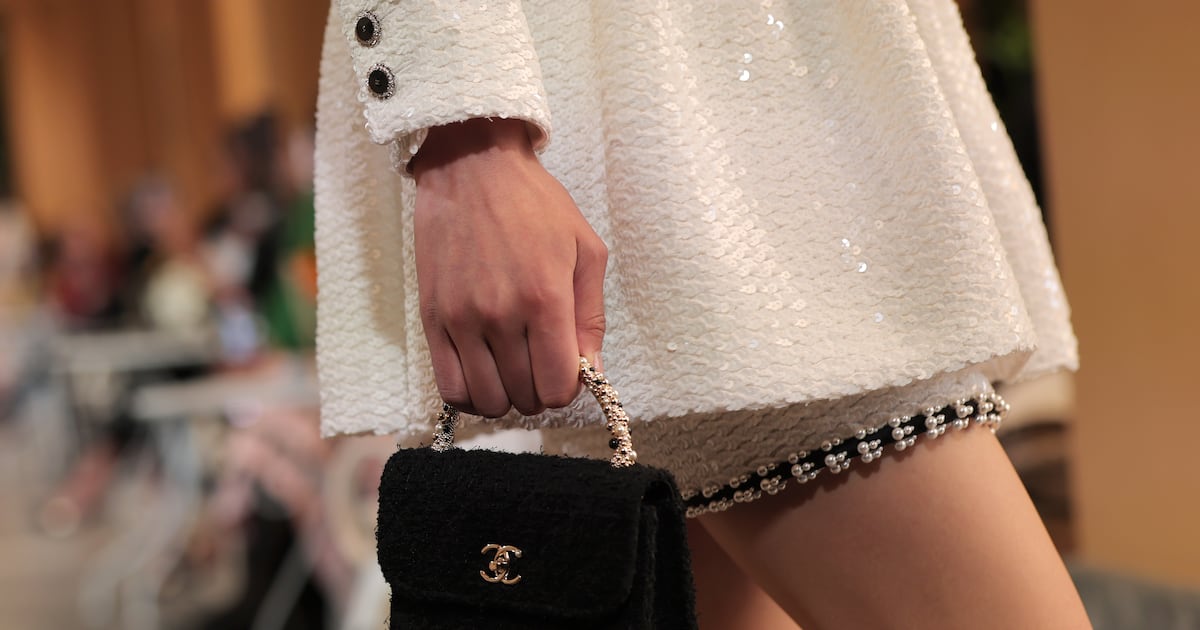
PARIS â Chanelâs annual revenues dropped for the first time since 2020, sliding 4.3 percent to $18.7 billion last year, the French couture and beauty giant said Tuesday.
Operating profit fell 30 percent to $4.5 billion, still a âvery healthy level,â according to chief financial officer Philippe Blondiaux, as the brand prepares to relaunch its fashion image under new artistic director Matthieu Blazy.
âThis performance followed a period of unprecedented growth in which revenues nearly doubled over the previous three years,â chief executive Leena Nair said. âItâs a challenging time in the world⦠and it continues to be challenging.â
New Stores, New Markets
Chanel maintained high investment levels during a difficult year for the luxury industry, in which geopolitical tensions and stubborn inflation contributed to a sharp downturn in demand for high-end products.
âWe remain committed to our investments because we always take a long-term approach. Weâve navigated many ebbs and flows in these 100 years that weâve been around, and weâre using this moment always to focus, to double down on what makes us uniquely âChanel,ââ Nair said.
Record capital expenditures of $1.8 billion included the opening of 48 new boutiques â mostly standalone fragrance and beauty shops as the brand invests in steadily ramping up direct-to-consumer sales in its cosmetics division. Six net fashion openings included two locations in China, where the brand remains âvery underdistributed,â Blondiaux said.
With major luxury markets like China, Europe and the U.S. under pressure, Chanel is working to expand in new countries including Mexico, India and Canada.
India is âone of the most vibrant economies in the world,â Nair said, as well as being a place where thereâs âa deeply held tradition of valuing and appreciating traditional craftsmanship.â Chanelâs beauty division recently opened its first store in Mumbai as well as launching a distribution deal with local e-commerce and retail giant Nykaa.
Marketing expenditure â including advertising, product launches and client events â totalled $2.4 billion as the company continued to stage flashy brand spectacles, including staging a Métiers dâArt runway show at the West Lake in Hangzhou, China in December.
Designer Transition
Fashion demand hasnât been hurt by the recent spate of unsigned studio collections as Chanel continued to stage six shows per year following the exit of artistic director Virginie Viard last summer. In fact, ready-to-wear was one of the brandâs fastest-growing categories last year, Blondiaux said.
âThe studio has done an amazing job â you can see their depth of expertise, the sophistication,â Nair said.
Still, the company is eager to unveil this autumn its first collection by Blazy, whom it hired from Bottega Veneta late last year. âHeâs one of the most talented and gifted designers in a generation⦠His vision and understanding of the Chanel codes is fantastic. We were very impressed by mastery of natural, luxurious materials, his commitment to craftsmanship, his commitment to products.â
Chanel says the lengthy transition was necessary as the designer needs to work ahead on a pipeline of shows, not just his debut. âChanel is a brand which has such profound depth that it takes time to truly understand and immerse oneself⦠Weâre not focusing on what heâs going to bring to one collection, but looking at the next many collections over the next few years. The vision takes time to unfold,â Nair said.
Beauty and Jewellery Outperform
Makeup and skincare were the beauty divisionâs strongest performers. Fragrance sales also grew as the brand rolled out its first âNo. 5â campaign starring the perfumeâs new ambassador, Margot Robbie, and worked to relaunch its âChanceâ range with a new flanker called âEau Splendideâ (the brandâs first new fragrance in eight years).
Watches and fine jewellery experienced âdynamic growthâ powered largely by its Coco Crush collection of cross-hatched jewellery, inspired by the brandâs quilted accessories.
Growing sales across ready-to-wear, beauty and jewellery suggest the decline in Chanelâs overall revenues could be largely attributed to the core leather goods category, a key driver of Chanelâs profits.
As consumers across the luxury industry have balked at steep price increases for handbags in recent years, Chanelâs hikes have been particularly steep: its iconic Flap and 2.55 handbags crossed the threshold of $10,000 early last year.
The company has since pulled back the pace of price increases. âThe average pricing effect we had for fashion was 3 percent last year, which Iâm sure you will agree was perfectly in line with global inflation, if not less than that,â Blondiaux said. âWe intend to maintain more or less the same policy, which is to monitor our prices in line with global inflation in 2025.â
In addition to slowing down on price hikes, the brand is working to reinforce the value proposition of its leather goods through splashy marketing, novelty and revamped design.
âYou know Matthieu has a particular expertise in accessories. So for the future we are doing everything we can to offer the best ecosystem in terms of high quality leather⦠the best quality raw materials to really foster his creativity,â Blondiaux added.
âWe just launched our Chanel 25 handbag, and itâs a huge success, fronted by Dua Lipa and Jenny â really buzzing,â Nair said. âIn luxury, the power of creation to delight and inspire clients, built with good storytelling thatâs authentic, built on good craftsmanship and with an understanding of clientsâ desires: it works.â

